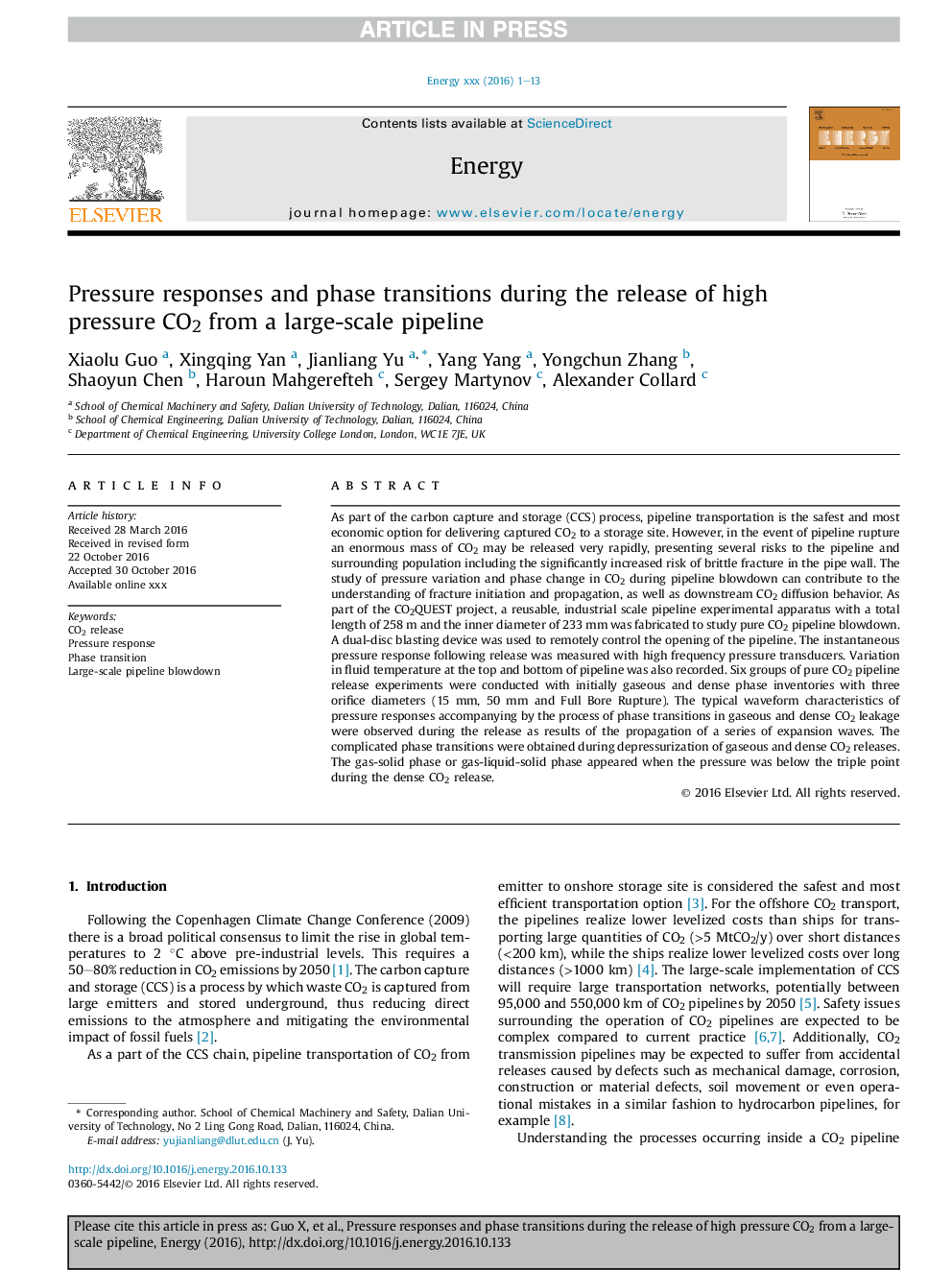| Article ID | Journal | Published Year | Pages | File Type |
|---|---|---|---|---|
| 5477125 | Energy | 2017 | 13 Pages |
Abstract
As part of the carbon capture and storage (CCS) process, pipeline transportation is the safest and most economic option for delivering captured CO2 to a storage site. However, in the event of pipeline rupture an enormous mass of CO2 may be released very rapidly, presenting several risks to the pipeline and surrounding population including the significantly increased risk of brittle fracture in the pipe wall. The study of pressure variation and phase change in CO2 during pipeline blowdown can contribute to the understanding of fracture initiation and propagation, as well as downstream CO2 diffusion behavior. As part of the CO2QUEST project, a reusable, industrial scale pipeline experimental apparatus with a total length of 258Â m and the inner diameter of 233Â mm was fabricated to study pure CO2 pipeline blowdown. A dual-disc blasting device was used to remotely control the opening of the pipeline. The instantaneous pressure response following release was measured with high frequency pressure transducers. Variation in fluid temperature at the top and bottom of pipeline was also recorded. Six groups of pure CO2 pipeline release experiments were conducted with initially gaseous and dense phase inventories with three orifice diameters (15Â mm, 50Â mm and Full Bore Rupture). The typical waveform characteristics of pressure responses accompanying by the process of phase transitions in gaseous and dense CO2 leakage were observed during the release as results of the propagation of a series of expansion waves. The complicated phase transitions were obtained during depressurization of gaseous and dense CO2 releases. The gas-solid phase or gas-liquid-solid phase appeared when the pressure was below the triple point during the dense CO2 release.
Related Topics
Physical Sciences and Engineering
Energy
Energy (General)
Authors
Xiaolu Guo, Xingqing Yan, Jianliang Yu, Yang Yang, Yongchun Zhang, Shaoyun Chen, Haroun Mahgerefteh, Sergey Martynov, Alexander Collard,
